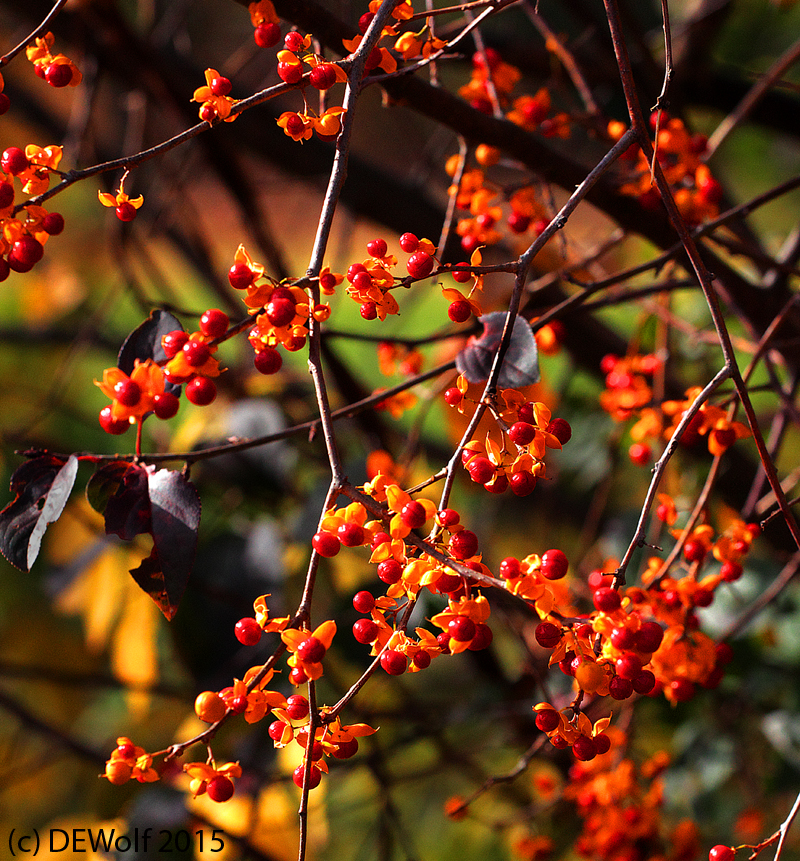Yesterday we had record tying temperatures in Cambridge – 73 F deg. It was delightful to be back in a summer shirt and it was no burden at all to walk along the Pond. I even resurrected my now grungy summer cap. Most of the leaves have fallen now, although not all, and it is so much fun to walk upon the path densely covered in leaves and to watch those leaves take flight in the wind. My cat has been waiting for this. For the past several weeks she has watched the leaves pile up on the patio and watched them fall from the trees. But what she really loves is watching them swirl in great numbers in the wind. A hater of the vacuum cleaner, she is a lover of the leaf blower.
The greatest display of color now are the berries, and best among these is the bittersweet. In a sense it is the transition berry, because people collect these vines and make Thanksgiving wreaths for their doors out of them. As a result, it used to be that bittersweet was beloved of New Englanders. Now to be clear there are two species Celastrus sandens the native to North American and Celastrus orbiculatus, the invasive oriental bittersweet. I believe that I have the invasive variety in Figure 1. But they are pretty much lumped together in love or hate. The point is that we are now expected, by the enforcers of political correctness, whoever they may be, to hate the bittersweet because it “chokes” other plants. So if you love the beautiful berries that explode like so much red-orange popcorn, it is best to be quiet about it. For the New England photographer it is a last boast of autumn, foliage in a microcosm.

